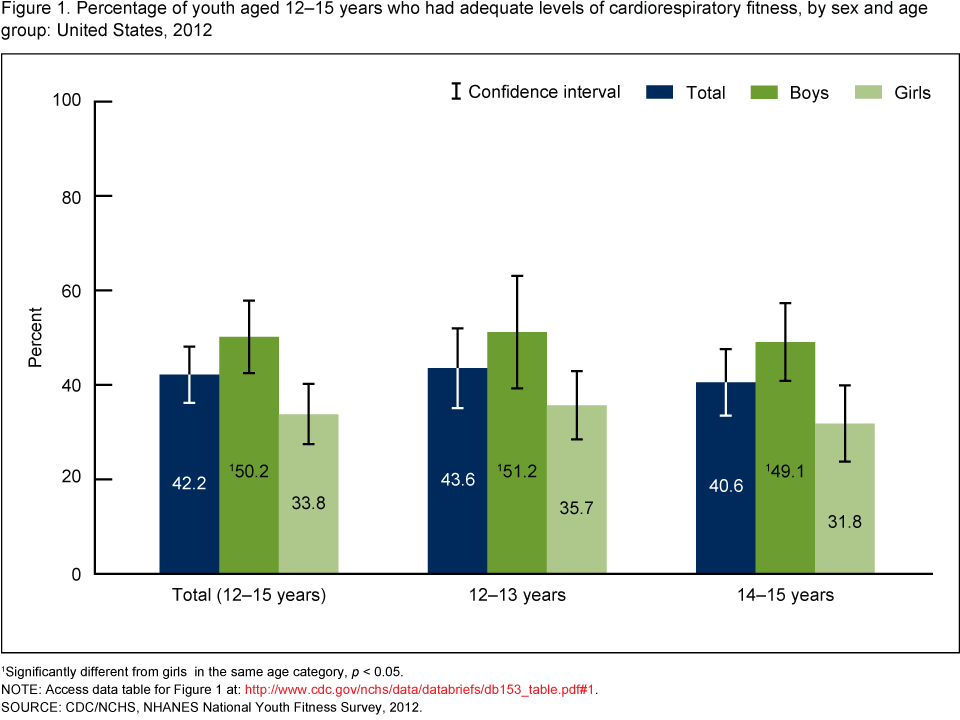Cardiorespiratory Fitness Levels Among U.S. Youth Aged 12–15 Years: United States, 1999–2004 and 2012
Posted on byPhysical fitness has been defined as “a set of attributes that people have or achieve that relates to the ability to perform physical activity.” Cardiorespiratory fitness is one component of physical fitness and is defined as the “ability of the circulatory and respiratory systems to supply fuel during sustained physical activity and to eliminate fatigue products after supplying fuel.” Cardiorespiratory fitness is most often measured by maximal oxygen uptake (VO2max), which is the maximum capacity of the body to transport and use oxygen during physical activity.
A new NCHS report presents the most recent national data on the percentage of youth who had adequate levels of cardiorespiratory fitness. Adequate levels of cardiorespiratory fitness are based on standards that are age- and sex-specific and established based on how fit children need to be for good health.
Key Findings from the Report:
- In 2012, about 42% of U.S. youth aged 12–15 years had adequate levels of cardiorespiratory fitness.
- The percentage of youth who had adequate levels of cardiorespiratory fitness did not differ by race and Hispanic origin, or by family income-to-poverty ratio.
- The percentage of youth who had adequate levels of cardiorespiratory fitness decreased as weight status increased.
- The percentage of youth aged 12–15 who had adequate levels of cardiorespiratory fitness decreased from 52.4% in 1999–2000 to 42.2% in 2012.
Posted on by


